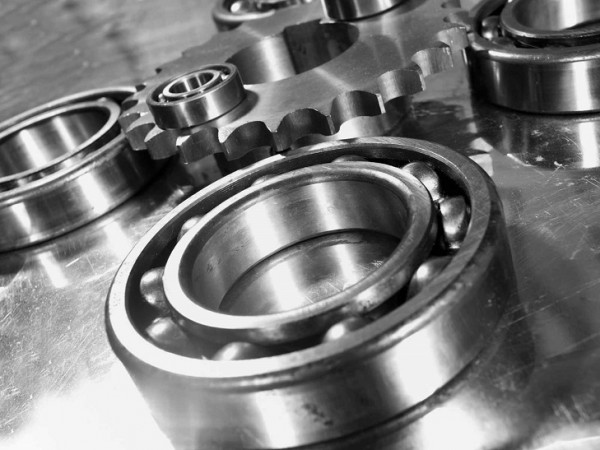27
Dec

Bearings are machine elements that constrain relative motion to only the desired motion and reduce the friction between moving parts. Their design can enable either a linear movement of the moving part, or free rotation around a fixed axis, or, it can prevent a motion altogether by controlling the vectors of the normal forces that bear on moving parts. Most bearings improve motion by minimising friction and they’re classified broadly depending on the type of operation, the direction of the loads applied to parts or the motions allowed.
The most commonly used bearings are called plain bearings and they consist of a shaft rotating in a hole. There are also rotary bearings that hold rotating components such as axles and shafts within the mechanical system and transfer radial and axial loads from the source of the load to the structure that supports it. Lubrication is often times used to reduce friction and prolong the life span of the bearings. A lot more different designs of bearings exist in order to satisfy the demands of applications and correctly meet their required reliability, performance and durability.
The term bearing originates from the verb to bear, and it represents a machine element that allows one part to support another. The simplest bearings are bearing surfaces which are formed or cut into a part, varying degrees of control over size, roughness, form and location of the surface. Other bearings are separate parts installed into a machine or a machine part. The most advanced ones for the most demanding applications are very precise and they are manufactured by some of the highest standards of modern technology.
The first modern patent of ball bearings was given to Philip Vaughan – an ironmaster and inventor who designed the first model in Carmarthen in 1794. Bearings played a crucial role in the Industrial Revolution, allowing the modern at the time industrial machinery to operate efficiently.
Most bearings require periodic maintenance to prevent failure, but there are some that require very little maintenance. The latter include different kinds of magnetic and fluid bearings as well as rolling-element ones that are also described as sealed for life or sealed bearings. This type contains seals to keep the grease in and the dirt out. They work well in many applications and provide a maintenance-free operation, however, some applications can’t use them effectively.
Proper design and installation practices will minimise the wear of the bearings. Plus, a well-planned maintenance program assessing the bearings on regular basis, ensuring that abrasive corrosive growths are extinguished and lubricant levels are satisfactory, will be more than sufficient to keep them in a good working state.